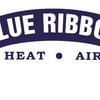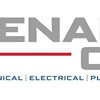According to the Department of Energy the average American home loses 20%-40% of conditioned air through leaking ducts. A duct system that is well-designed and properly sealed can make your home more comfortable, energy efficient, and safe. Sealing and insulating ducts can help with common comfort problems, such as rooms that are too hot in the summer or too cold in the winter. Fumes from household and garden chemicals, insulation particles, and dust can enter your duct system, aggravating asthma and allergy problems.
Indoor air quality is a concern in today's homes. Most household dust contains dust mites, mold, mildew, pollen and animal dander. These pollutants circulate through the air, and can inflame breathing problems like allergies and asthma. Surface cleaning is ineffective on filthy, clogged air ducts full of dust, bacteria and other debris. People who have allergies and live in older homes should have their ducts inspected. Once you see what you are breathing in on a daily basis you will want to have your duct work cleaned.
Considering other energy-saving upgrades to your home? Choosing Henry LiquidFoil provides a less expensive, energy saving solution that can lead to long-term results. Below offers a comprehensive comparison of LiquidFoil to sheet-applied, attic insulation and other liquid barriers. Sheet applied or foil radiant barriers can cost up to 5X more per square foot than LiquidFoil Attic Barrier. Sheet applied or foil radiant barriers require two people for installation and can take up to 3X as long. LiquidFoil requires only one person.
Ventilation of the home attic is important for two reasons. During the summer, excess heat that builds up in the attic during the day results in high energy costs for cooling. Also, moisture produced within the home may move into the attic if ceiling vapor barriers are not used. If this moisture is not exhausted from the attic it can condense and cause insulation and construction materials to deteriorate. Thus, temperature and moisture control are the major reasons for providing attic ventilation.
Cleaning your lint screen is simply not enough to ensure an efficient, safe dryer. Even a cleaned lint screen traps only 75% of the lint produced inside a dryer. The rest of the lint builds up over time inside the dryer vent, becoming a fire hazard, as dryer lint is highly flammable and has the potential to ignite at any time. A dryer with restricted airflow also runs significantly longer, causing utility costs to rise, increasing the need for repairs and decreasing the life of the dryer. By cleaning your dryer vent, we can help ensure your clothes dryer is both safe and energy efficient.
Similar Businesses







